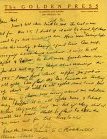The Sweet Trials, Clarence Darrow and Race

"Gentlemen, I ask you to use all of your judgment, all of your understanding, all of your sympathy in the decision of this case. I speak not only for these eleven people, but for a race that in spite of what you may do will go on and on and on to heights that it has never known before. I speak to you not only in behalf of them, but in behalf of the millions of blacks who look to these twelve white faces for confidence and trust and hope in the institutions of our land, and in the guarantees that the laws have made to them, those blacks who all up and down the length and breadth of our land, and whose ancestors we brought here in chains . . . ." – Closing Argument of Clarence Darrow in the trial of Ossian Sweet et. al., November 24, 1925 (first Sweet trial).
"I would like to see a time when man loves his fellow-man, and forgets his color or his creed. We will never be civilized until that time comes. I know the Negro race has a long road to go. I believe the life of the Negro race has been a life of tragedy, of injustice, of oppression. The law had made him equal, but man has not. And, after all, the last analysis is, what has man done? - and not what has the law done?" – Closing Argument of Clarence Darrow in the trial of Henry Sweet, May 18, 1926 (second Sweet trial).
Transcript from the first Sweet trial.
Subpoenas (1925).Various subpoenas for the first Sweet trial.
Miscellaneous Documents from the Sweet Trial (1925).Includes list of witnesses, defense demands for separate trials, request for bail and information filed by the prosecutor.
Motion to Quash Information and Discharge Defendants.Motion filed by Cecil Rowlette, Julian Perry, and Charles Mahoney, three black attorneys who first represented the Sweets and the other defendants.
Closing Argument of Clarence Darrow in the First Sweet Trial.The People v. Ossian Sweet, Gladys Sweet, et. al. (1925).
Argument of Clarence Darrow in the Case of Henry Sweet.This is the second Sweet trial. Held in the Recorders Court, Detroit, Michigan before the Honorable Frank Murphy, April and May, 1926.
Trial Transcripts: Closing Arguments in the Henry Sweet trial (2nd Sweet trial).Partial transcript of the Henry Sweet trial containing closing arguments of Lester Moll (prosecution), Thomas F. Chawke (defense) and Robert Toms (prosecution). Also contains Judge Frank Murphy's instructions to the jury.
Nolle Prosequi.In June 1927, prosecutor Robert Toms filed this nolle prosequi to drop any further prosecution of the Sweets or the other defendants. Nolle prosequi is Latin for "not to wish to prosecute" and is "A legal notice that a lawsuit or prosecution has been abandoned." Black's Law Dictionary. Toms acknowledged that the state's evidence against Henry Sweet was much stronger than against the other defendants and since Henry Sweet was found not guilty it was not likely the state could prevail against the other defendants - "in view of the proceedings already had in this cause such a result seems improbable to the last degree."
This is an 1860 Michigan Supreme Court case relied on by the defense. The court held that the law does not require that one who kills another in self-defense must be in actual or imminent danger but may do so if the defendant acts under reasonable apprehension of the danger even if later he turns out to have been mistaken. The case also states that, "a man assaulted in his dwelling is not obliged to retreat" and may use force including deadly force to repel the attacker.
Michigan statute that defines twelve or more armed persons or thirty or more unarmed persons unlawfully assembled as an offense against the public peace and directs government officials and police to disperse them. The Sweet defense used this statute to show that the white crowd gathered around Ossian Sweet's home was an unlawful "mob" and the Sweet defendants were justified when they defended themselves. Judge Murphy's instructions to the jury during the Henry Sweet trial incorporated this statute: "If you find that on the night of September 9th, in the vicinity of Dr. Sweet's home, twelve or more persons armed with clubs or other dangerous weapons, or thirty or more, whether armed or not, were assembled for the purpose of violently ejecting Dr. Sweet from his home, or for the purpose of intimidating him by threats so that he would leave his home, then such persons were engaged in an unlawful assembly or riot, even though there was no loud tumult or great confusion."
Michigan Public Acts, 1927 - No. 372.Michigan gun-control statute enacted after the Sweet trials. Although race neutral on its face it was enacted to keep blacks from owning firearms.
Dr. Ossian Sweet Self-defense Act (2006).2006 bill which would allow an individual to use deadly force against an attacker with no duty to retreat under certain conditions. It was later amended to remove the name: "Dr. Ossian Sweet Self Defense Act". The amendment passed in the Senate by voice vote on June 6, 2006. The bill passed in the Senate (28 to 10) on June 6, 2006 and passed in the House (90 to 17) on June 27, 2006. It established that a law-abiding person who is attacked in any place where he or she has a right to be has no duty to retreat, and can stand his or her ground and meet force with force, including deadly force if necessary to prevent death or great bodily harm. The vote was 90 in favor, 17 opposed, and 0 not voting. It was signed into law by Gov. Jennifer Granholm on July 18, 2006. The law is titled the "Self-defense Act."
The complaint and criminal warrant against the Sweets and other defendants.
The Negro in Detroit (1926).Report of the Mayor's Interracial Commission. Mayor John Smith appointed the commission in the aftermath of the murder of Leon Breiner to study the problems of race relations in Detroit.
This article is about ten successful and prominent black citizens; the author and three of the men discussed were friends of Clarence Darrow. W.E.B. Du Bois was a co-founder of the NAACP and was one of the most important black leaders of his day. Edward H. Morris was a prominent Chicago attorney and politician. Daniel Hale Williams was perhaps the most prominent black surgeon of his day, and served as Darrow's personal physician for a time. Charles Waddell Chesnutt was a writer and political activist. From Appleton's The Booklover's Magazine (1903).
National Negro Conference (1910).Announcement about the second annual conference of the National Negro Committee to be held in New York on May 12-14, 1910. Clarence Darrow spoke at this conference which resulted in the formation of the National Association for the Advancement of Colored People (NAACP).
Clarence Darrow criticized in Watson's Jeffersonian Magazine.Watson's Magazine criticized Darrow for advocating interracial marriage when Darrow spoke at the second annual conference of the National Negro Committee in New York from May 12-14, 1910. This meeting has been identified as the beginning of the NAACP. Watson's Magazine was owned and edited by Thomas Edward Watson, a U.S. Senator from Georgia from 1920 until his death in 1922. Watson and his publications were very anti-Semite, anti-Catholic and anti-black.
Closing the Little Black Schoolhouse: Second National Negro Conference Results in New Organization by May White Ovington (1910).The second annual conference of the National Negro Committee took place in New York from May 12-14, 1910. This meeting is often thought to have led to the formation of the National Association for the Advancement of Colored People (NAACP). This report states: "At its business meetings the conference adopted a plan of permanent organization. The committee was to become the National Association for the Advancement of Colored People, with headquarters in New York." However, Mary White Ovington identifies the first conference she attended with William English Walling as the start of the NAACP: "So I wrote to Mr. Walling, and after some time, for he was in the West, we met in New York in the first week of the year of 1909. With us was Dr. Henry Moskowitz, now prominent in the administration of John Purroy Mitchell, Mayor of New York. It was then that the National Association for the Advancement of Colored People was born. It was born in a little room of a New York apartment." How NAACP Began: According to the report of the second annual conference, "[t]he speakers of the white race ranged all the way from a conservative Virginian, Oscar Crosby . . . to the labor champion, Clarence Darrow of Chicago." Darrow shocked many whites when he called for overturning laws barring interracial marriage. NOTE: The author is listed as May White Ovington, but she is most often referred to as Mary White Ovington.
Colored Chicago and Some Chicagoans of Note (1915).The Crisis, the flagship publication of the NAACP, published this article about prominent blacks in Chicago. The article mentions three individuals who were friends of Clarence Darrow: Oscar DePriest, Dr. Daniel Hale Williams and Jesse Binga.
Negroes Move North (1918).Article describing migration of blacks from the South to the North. Written by George Edmund Haynes, a professor at Fisk University and the Educational Secretary of the National League on Urban Conditions Among Negroes.
The Case of Samuel Moore (1921).Editorial in The Crisis about Samuel Moore who was convicted of first degree murder in Washington in 1891 and sentenced to death for killing a white man. President Harrison later commuted the sentence to life in prison. Moore always claimed self defense and his requests for parole were championed by Eugene Debs who for a time was in the same prison. Moore got out of prison in 1927 but was sent back to prison at some point. In September 1942 the 8th Circuit Court of Appeals dismissed Moore's pro se petition for a writ of habeas corpus asking to be dismissed from custody. The court recommended Moore apply for Executive clemency. The court stated "Petitioner is an aged negro who has served more than half a century in prison. He wants to die a free man." At the time of his petition Moore was in the Medical Center for Federal Prisoners in Springfield Missouri. He had been in prison for a total of more than fifty years. Moore wrote several letters to Clarence Darrow's wife Ruby in 1939 and 1940.
Howard, The National University of the Negro Race by Emmet J. Scott (1924).Short article written by the Secretary-Treasurer of Howard University. Scott says the Medical School is rated as "Class A" institution by the American Medical Association. Ossian Sweet graduated from Howard with a medical degree in 1921. At the time Howard was one of only two black medical schools in the country the other being Meharry Medical College in Nashville.
Newspaper account of speech Clarence Darrow gave to black audience at Y.M.C.A. about Sweet trial and race. Darrow also talked about prohibition.
William Sanders Scarborough was the President of Wilberforce University when Ossian Sweet attended. Scarborough was born into slavery in Macon, Georgia, in 1852. He went on to become the first African American classical scholar. Scarborough served as president of Wilberforce University between 1908 and 1920.
Edward H. Morris.Short bio of Edward Morris, a black attorney in Illinois. Clarence Darrow was good friends with Morris and worked with him in 1917 to defend Oscar DePriest a black Chicago politician on trial for conspiracy charges relating to gambling and prostitution. In November 1923, Darrow wrote a letter to the editor of The Broad Ax, a black Chicago newspaper, strongly protesting a report from a committee of the Chicago Bar on candidates for judges. The report stated that Morris was not fit for the bench and also mentioned that he was a "colored man." Darrow accused the committee of being prompted "solely" by Morris' color and praised his ability.
Biographical Sketch of Honorable Ossian B. Hart, Late Governor of Florida, 1873.Ossian Sweet was named in honor of Ossian B. Hart a white progressive Republican Governor of Florida who fostered good relation with black citizens in Florida. Ossian's oldest brother, who died in infancy, had been named after Ossian B. Hart's brother.
The Problem of the Negro by Clarence Darrow.Address by Clarence Darrow before a mostly African-American audience at the Men's Club in Chicago on Sunday, May 19, 1901. Published in The International Socialist Review.
The Talented Tenth by W.E.B. DuBois.1903 essay by DuBois explaining his theory that a talented group of educated blacks was needed to lead their race to social equality. DuBois began his essay with "The Negro race, like all races, is going to be saved by its exceptional men." Ossian Sweet became deeply immersed in DuBois's message and saw himself as part of this "talented tenth." Published in The Negro Problem: A Series of Articles by Representative American Negroes of Today by Booker T. Washington (1903).
The Disfranchisement of the Negro by Charles W. Chesnutt (1903).Charles Waddell Chesnutt (1858 - 1932) was an African-American author, essayist and political activist. Chesnutt wrote a letter to Darrow in 1907 to thank him for sending a copy of a speech Darrow gave at the Bethel Church in Chicago in December 1906 about blacks and racism. This article about "Disfranchisement" was published in The Negro Problem: A Series of Articles by Representative American Negroes of Today by Booker T. Washington.
The Negro Problem: A Series of Articles by Representative American Negroes of To-day (1903).Contributions by Booker T. Washington, William Edward Burghardt Du Bois, C. W. Chesnutt, W. H. Smith, H. T. Keeling, P. L. Dunbar, and T. T. Fortune.
National Conference on the Status of the American Negro.An announcement for a two-day conference to be held in New York starting May 31, 1909 was published in The Survey by the Charitable Organization Society. Although it would not take on the name immediately, this conference was actually the first meeting after the formation of the National Association for the Advancement of Colored People (NAACP). This announcement states that among those giving an address would be Clarence Darrow.
Proceedings of the National Negro Conference 1909.Held in New York May 31 - June 1, 1909.
Howard University Medical College.Brief description of Howard University Medical College based on a 1910 inspection. From Medical Education in the United States and Canada: A Report to the Carnegie Foundation for the Advancement of Teaching.
Half a Man: The Status of the Negro in New York by Mary White Ovington (1911).Mary White Ovington was a co-founder of the NAACP.
Three Spiritual Leaders of the American Negro (1913).Excerpt about William S. Scarborough of Wilberforce University. Published in the The African Abroad: Or, His Evolution in Western Civilization, Tracing His Development Under Caucasian Milieu by William Henry Ferris.
The Party of Freedom and the Freedmen--A Reciprocal Duty by William Sanders Scarborough.Address delivered at the Lincoln Day Banquet, Dayton, Ohio, February 11, 1899. William Sanders Scarborough was President of Wilberforce University. Published in Masterpieces of Negro Eloquence: The Best Speeches Delivered by the Negro from the Days of Slavery to the Present Time by Alice Moore Dunbar-Nelson.
William Lloyd Garrison: A Centennial Oration by Reverdy C. Ransom, D.D. (1914).Reverdy C. Ransom was a good friend of Clarence Darrow. Published in Masterpieces of Negro Eloquence: The Best Speeches Delivered by the Negro from the Days of Slavery to the Present Time by Alice Moore Dunbar-Nelson.
History and Report of the Exhibition and Celebration to Commemorate the Fiftieth Anniversary of the Emancipation of the Negro.Clarence Darrow and many others were named Honorary Vice Presidents for this celebration held at the Coliseum in Chicago from August 22 to September 16, 1915.
Howard University.Brief description of Howard University based on visits in 1915. Published in Negro Education: A Study of the Private and Higher Schools for Colored People in the United States by the United States Office of Education.
Wilberforce University.Overview of Wilberforce University based on a 1915 site visit published in Negro Education: A Study of the Private and Higher Schools for Colored People in the United States by the United States Office of Education.
Reverdy C. Ransom, of the A.M.E. Church (1918).Excerpt from The Negro in Literature and Art referring to Reverdy Ransom. Clarence Darrow and Ransom were friends and worked together to settle a labor strike in Chicago.
History of Wilberforce University (1918).Brief history published in History of Greene County, Ohio: Its People, Industries and Institutions by Michael A. Broadstone.
List of students in Howard University Medical School in 1918.Ossian Sweet is listed as a freshman on page four. The list, from the Catalogue of Howard University, includes students in the medical, dental and pharmaceutic colleges.
Catalogue Howard University 1917-1918.Ossian Sweet is listed on page 261 of this catalog of the officers and students of Howard University during 1917-1918, the year that Sweet was a freshman medical student. The catalog also provides information about Howard University.
Educational Problems by Reverdy C. Ransom (1921).Excerpts from an address given in June 1921. Clarence Darrow was a friend of Reverdy Ransom.
The Founding of Howard University by Walter Dyson (1921).Written just after Ossian Sweet graduated from Howard University School of Medicine.
Clarence Darrow Tells Negro Audience to Maintain Attitude of Defiance Toward White Men (1927).Critical description of a speech given by Clarence Darrow before a black audience in Baldwin, Alabama.
Samuel Moore Letters.Samuel Moore, an African-American prisoner in the Federal Penitentiary in Atlanta, wrote these letters to Ruby Darrow in 1939 and 1940.
From: Moore, Samuel To: Darrow, Ruby Jun 3, 1939
Proceedings in the Supreme Court of the United States In Memory of Mr. Justice Murphy (1951).Resolutions adopted in memory of Justice Frank Murphy.
Photos - Key Figures
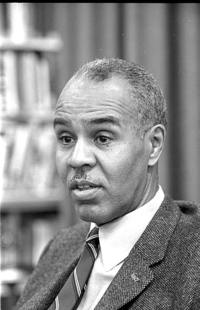
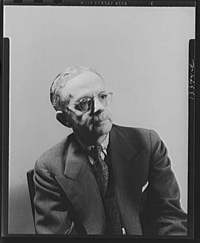
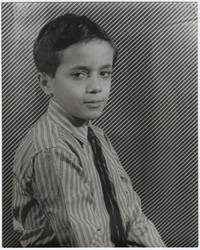

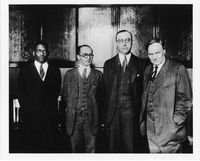
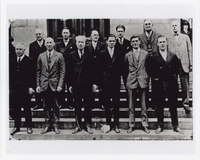

Photo is from The Negro Problem: A Series of Articles by Representative American Negroes of Today by Booker T. Washington (1903). Chesnutt Letter to Darrow
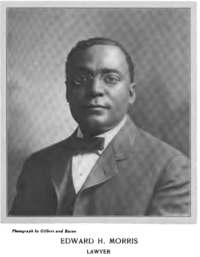
"I know of no man on either ticket who is better qualified or whom I believe would make a better judge, and I trust that the colored voters of this City will give him such a vote as emphatically to show their disapproval of the report and the action."
Photo from Appleton's Magazine (1903).
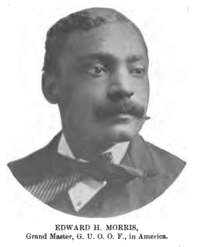
The G.U.O.O.F. under Morris's name refers to the Grand United Order of Odd Fellows, a fraternal organization founded in 1843 for black members with a charter from the Grand Lodge in Manchester, England.
Photo from: The Official History and Manual of the Grand United Order of Odd Fellows in America: A Chronological Treatise ... by Charles H Brooks (1902).
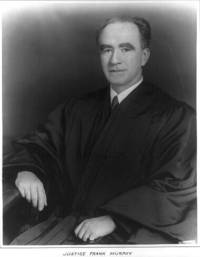
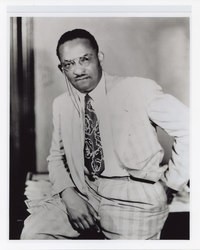

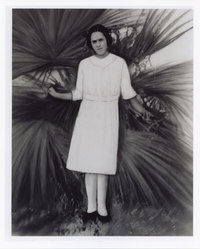
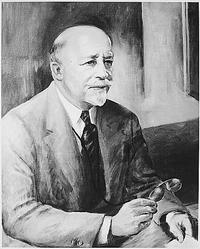

Laura W. Waring, Artist. National Archives and Records Administration. ARC Identifier 559201 / Local Identifier H-HNP-24.
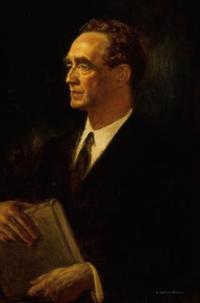


On May 19, 1901 Clarence Darrow gave a speech to a black audience at the Men's Club in Chicago titled "The Problem of the Negro." He told the audience that during the previous week he had conversations with two men about the race question: "The first was born in Virginia upon a plantation, and knew what slavery was - he is one of the ablest men in the United States, a man who has given his whole life to the cause of human liberty -- Mr. Moncure D. Conway. Beginning life as a Methodist minister, he graduated from that to a Congregational minister, and from that he graduated out of all the churches. He had the spirit of abolitionism and, while he was the son of a slaveholder, born with the slaves, he did not believe in slavery. He entered the cause of abolitionism way back when John Brown entered it; he entered it with Wendell Phillips, with William Lloyd Garrison, with Henry Ward Beecher, and with all the great men who made the cause of abolitionism famous, and I may say sacred, as a great cause for human liberty." Wikipedia: Moncure Daniel Conway
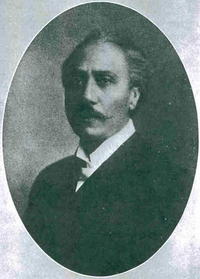
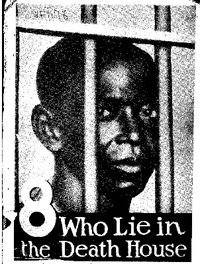
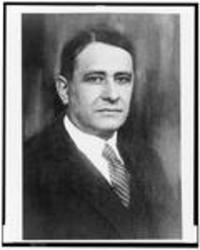
After the Sweets and the other defendants were arrested and charged with murder, the NAACP worked to find top notch lawyers to defend them. A committee consisting of James Weldon Johnson, the first black secretary of the NAACP, Walter White, assistant secretary of the NAACP, Arthur Spingarn, and Charles Studin went to meet with Clarence Darrow to try and convince him to take the case. Library of Congress Prints and Photographs Division, LC-USZ62-110586.
Photos

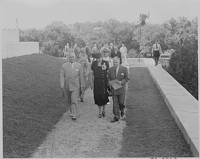
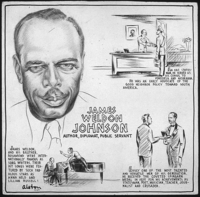
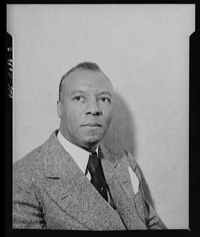
"Anglo Saxon jurisprudence recognizes the law of self-defense. Our information also records that the right of self-defense is recognized in the laws of all countries. ...We are consequently urging Negroes and other oppressed groups confronted with lynching or mob violence to act upon the recognized and accepted law of self-defense. Always regard your own life as more important than the life of the person about to take yours, and if a choice has to be made between the sacrifice of your life and the loss of the lyncher's life, choose to preserve your own and to destroy that of the lynching mob." Library of Congress Prints and Photographs Division, LC-USW3-011696-C.



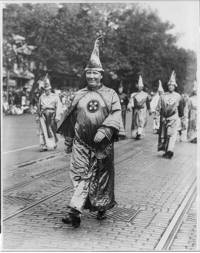
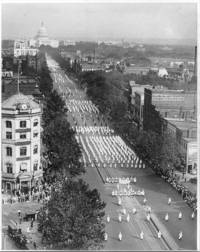
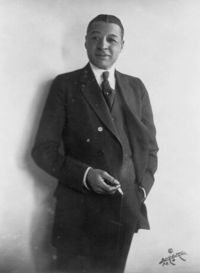
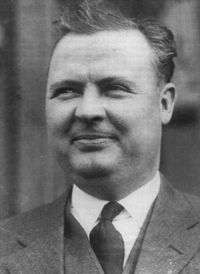
Stephenson was arrested, tried and on November 16, 1925 he was convicted of murder in the second degree and sentenced to life imprisonment. On July 7, 1931 the Chicago Daily Tribune reported that Clarence Darrow had joined Stephenson's defense to help in his appeals to get out of prison. The story noted that Darrow's appearance before the Indiana Supreme Court was prevented when the attorneys agreed to file written briefs instead of give oral arguments. In January 1932 the Supreme Court of Indiana affirmed Stephenson's murder conviction. The kidnapping and murder of Oberholtzer was so shocking it helped end the rise of the KKK in Indiana.
Stephenson was paroled on March 23, 1950, but violated parole by disappearing around September 1950. Stephenson moved to Robbinsdale, Minnesota where he was arrested on November 11, 1950. He was held in the Hennepin County jail for about a year while he fought extradition to Indiana. The Supreme Court of Minnesota ruled against Stephenson in November 1951 and he was sent back to Indiana. In 1951 he sentenced to serve another 10 years in prison. On December 21, 1956, Stephenson was given a Christmas clemency with dozens of other prisoners but this was conditioned on his leaving Indiana and never returning. In 1961, he was arrested on charges of sexually assaulting a sixteen-year-old girl in Missouri. Sources differ with some saying the charges were dropped, some saying he was fined and others saying he was sent to prison but was paroled in November 1961.
Letters between Stephenson and Clarence Darrow. Photo from: Wikipedia: David Curtis Stephenson
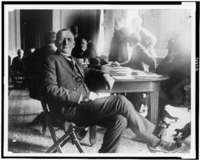

Photo is from The Crisis (1921).

Photo from The Crisis (1915).
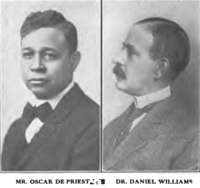
Photo from volume 10 of The Crisis (1915). DePriest Letter to Darrow
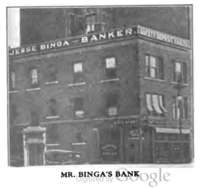
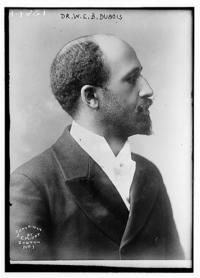
"First, the American Negro went down in his pocket and for the first time in his history put into the treasury of the N.A.A.C.P. an amount of money that meant that these defendants would have a chance for a fair trial. Justice in the United States costs money. No pauper need apply at the barred gates of our criminal courts. Secondly, we found in Clarence Darrow a man who dared; whose whole life has been daring; who has had the rare moral courage to stand and defend, with his singular sincerity, unpopular causes." Michael J. Klarman, The Racial Origins of Modern Criminal Procedure, 99 MICH. L. REV. 48, 90 (2000). Library of Congress Prints and Photographs Division, LC-USZ62-28485.
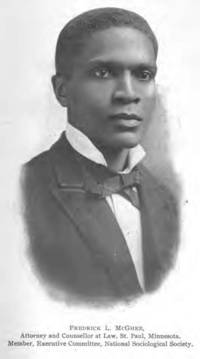
Photo from How to Solve the Race Problem: The Proceedings of the Washington Conference on the Race Problem in the United States by Jesse Lawson, National Sociological Society (1904).
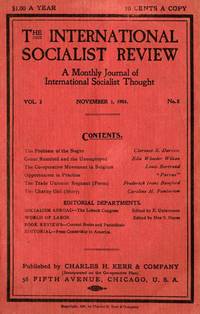
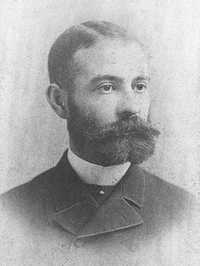

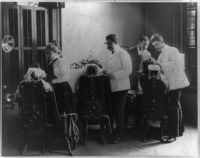
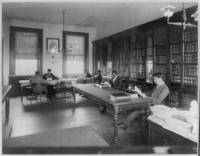
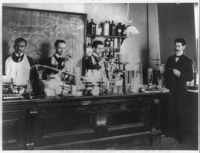
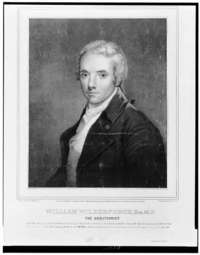
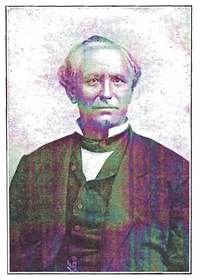
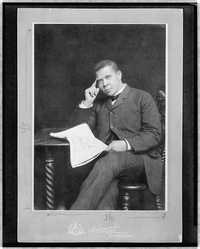
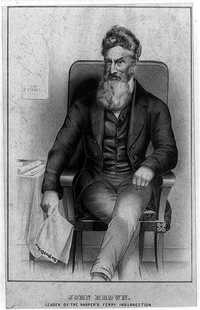
Clarence Darrow was a great admirer of John Brown and often gave a lecture about him. However a myth has grown from an erroneous account by Irving Stone in his biography of Darrow. Stone wrote that the abolitionist John Brown came to Kinsman to confer with Amirus Darrow and that Brown laid his hand on the then five year old Clarence Darrow and told him "The Negro has too few friends; you and I must never desert him." Several sources have pointed it out this cannot be true because Brown was hanged in 1859 when Clarence was two years old. However, Ohio was an important part of the Underground Railroad which went through the area where the Darrow family lived. This area was strongly abolitionist and Brown got his men ready for the raid on Harpers Ferry in West Andover, Ohio which is about fifteen miles from Kinsman where the Darrow family lived. So it is possible that Amirus Darrow, who was an abolitionist, met Brown at some point. Library of Congress Prints and Photographs Division, LC-USZ62-89569.
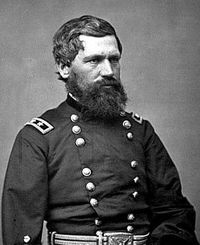


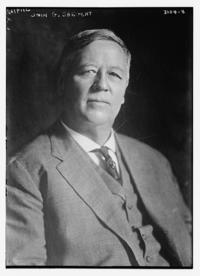

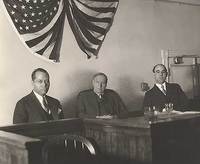

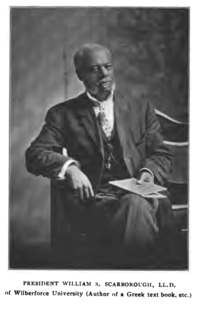
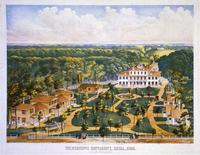
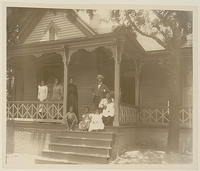
Photos from album: Negro life in Georgia, U.S.A., compiled and prepared by W.E.B. Du Bois, v. 4, no. 352. PART OF: Du Bois, W. E. B. (William Edward Burghardt), 1868-1963. Du Bois albums of photographs of African Americans in Georgia exhibited at the Paris Exposition Universelle in 1900. Library of Congress Prints and Photographs Division,LC-DIG-ppmsca-08768.
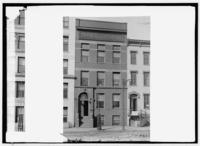
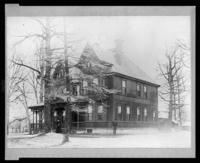
Photograph from the American Negro exhibit at the Exposition universelle internationale de 1900. Library of Congress Prints and Photographs Division, LC-USZ62-132533.
